
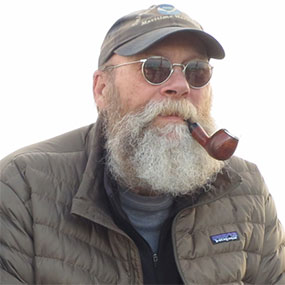
Bear Mission Coordinator, NOAA Office of National Marine Sanctuaries Maritime Heritage Program
For more than four decades, Brad Barr has been actively engaged as a practitioner in marine and coastal protected areas management and preservation. He received his undergraduate and graduate degrees at the Universities of Maine and Massachusetts, and his Ph.D. from the University of Alaska Fairbanks. He is currently a Senior Advisor in the Office of National Marine Sanctuaries’ Maritime Heritage Program. For the past 13 years, he has served as Visiting Faculty at the University Center of the Westfjords in Ísafjör∂ur, Iceland, teaching courses on marine protected areas, preservation of underwater cultural heritage resources, and Arctic Ocean governance. He is also an Affiliate Professor at the University of New Hampshire School of Marine Science and Ocean Engineering and has taught graduate courses at the World Maritime University in Malmö, Sweden. He is a member of the International Union for Conservation of Nature (IUCN) World Commission on Protected Areas, serves on the IUCN Marine Mammal Protected Areas Task Force, and is a founding member of the International Committee on Marine Mammal Protected Areas. He has served on the Board of Directors of the George Wright Society in the United States, as well as the Science and Management of Protected Areas Association (SAMPAA) and the Coastal Zone Canada Association (CZCA) in Canada.
In 2008, he was awarded a “Partners for the Americas” Fellowship, conducted in British Columbia, focused on effective Indigenous co-management of protected areas. In 2017, he received a Fulbright Research Fellowship to characterize and make recommendations regarding the preservation of the whaling heritage landscape of Iceland. He has also been chief scientist and co-principal investigator of a 2015 research expedition to the Arctic, a mission to map and document whaling shipwrecks in the nearshore waters of the Chukchi Sea. He serves as the mission coordinator, in partnership with the U.S. Coast Guard and NOAA Ocean Exploration, in the expedition to locate and document the wreck of the U.S. Revenue Cutter Bear. He has published extensively on research focused on marine protected areas science and management, the identification and management of ocean wilderness, and place-based heritage preservation.
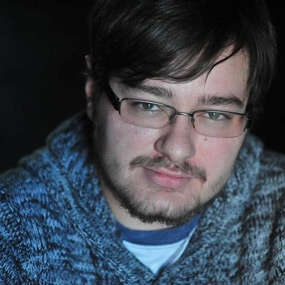
Filmmaker and Photographer
Brendan Carney is a filmmaker and photographer who graduated from Missouri Western State University in 2019. In 2019, Brendan worked with Marine Imaging Technologies, Woods Hole Oceanographic Institution, and NOAA for the Stellwagen live telepresence event from the Portland shipwreck. Brendan maintains a YouTube channel which highlights his original podcasts and other creative content. He enjoys documentary filmmaking and is an avid baseball fan. He currently resides in the San Antonio, Texas, area.

Assistant Historian, U.S. Coast Guard
Beth Crumley has served as the Assistant Historian of the United States Coast Guard (USCG) since October 2017. Prior to joining the Coast Guard Historian’s Office, Ms. Crumley served as a Reference Historian at Marine Corps History Division and as an ordnance curator at the National Museum of the Marine Corps, where she was a member of team that planned and opened the museum in 2006.
She is the author of Coast Guard Compass blogs on the loss of USCG Cutters Jackson and Bedloe, written after participating in a NOAA expedition to map wrecks off the North Carolina coast, and aviation pioneer Frank A. Erickson. Ms. Crumley also authored USMC: Three Centuries of Glory, and edited A Legacy Walk through Marine Corps and USMC: A Complete History. She has written numerous articles that have appeared in “Fortitudine,” “Leatherneck,” “Proceedings,” and “International Committee of Museum of Arms and Military History. In addition, Ms. Crumley wrote a weekly history blog for the Marine Corps Association.
Ms. Crumley has delivered lectures on USCG history, including lectures on the loss of Escanaba in World War II, Medal of Honor recipient Douglas Munro, the genesis of USCG helicopter aviation, and Frank Erickson: Aviation Pioneer, presented at Erickson’s posthumous Legion of Merit ceremony at Coast Guard headquarters. Over the course of her career, she has presented several papers at the Society for Military History and the McMullen Naval Symposium and lectured at the National Museum of the Marine Corps, the Pentagon, Marine Corps Officer Candidate School, Marine Corps Systems Command, the Freedom Foundation, and USCG headquarters. While serving as the unit historian at Marine Corps History Division, Ms. Crumley presented lectures to several Marine Corps units and veteran’s groups, and conducted tours of the World War I battlefield at Belleau Wood. She was also a participant in panel discussions at the Marine Corps Aviation Association conference and spoke on early Coast Guard helicopter aviation at the Vertical Flight Society conference.
She has been featured as a subject matter expert on television’s “Weaponology,” “Lock n’ Load,” and “American Rifleman.” Additionally, she has been nominated for the Marine Corps Heritage Foundation’s Wallace Greene Award and twice-nominated for the Heinl Award for excellence in journalism.
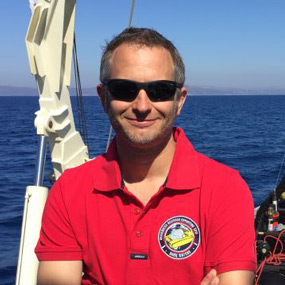
Marine Imaging Technologies
A world class diver, passionate explorer, and perpetual imaginer, Evan Kovacs began his work with subsea imagery in 2003 while working with the History Channel. He is one of very few people to film—in both 2D and 3D—the R.M.S. Titanic and her sister ship, H.M.H.S. Britannic. Over the course of his career, he has participated in expeditions to survey and film wrecks, caves, and archaeological sites across the United States, to the islands of the South Pacific, the English Channel, the jungles of Mexico and the Dominican Republic, the D-Day beaches of Normandy, the Mediterranean, Thailand, and Antarctica. His underwater and topside work can be seen on National Geographic, History Channel, Discovery Channel, PBS, CBC, NHK, and elsewhere. In 2009, he was nominated for an Emmy in videography for the NOVA program, Lost and Found: Legacy of the USS Lagarto.
Since 2006, he has partnered with the Woods Hole Oceanographic Institution (WHOI) to film around the world with the deep submersible Alvin, the Pisces submersibles, and numerous remotely operated vehicles (ROVs). He frequently collaborates with the Advanced Imaging and Visualization Lab at WHOI to build and operate imaging systems for filming both above and below water for broadcast television, archaeological expeditions, and esteemed research institutions around the world.
In 2010, Kovacs formed Marine Imaging Technologies, LLC (MITech), a sought-after subsea imaging company headquartered in Cape Cod, Massachusetts, to develop innovative ideas for subsea imaging systems and robotics, including Pixel, the first cinema class ROV; Spooler, a new style of penetration class ROV; and Hydrus, the first deepwater, lowlight virtual reality system.
Working with the United States National Parks Service, he first demonstrated Spooler’s capabilities on the USS Arizona Memorial in Hawaii in 2016. The expedition was featured on the PBS documentary Pearl Harbor - Into the Arizona.
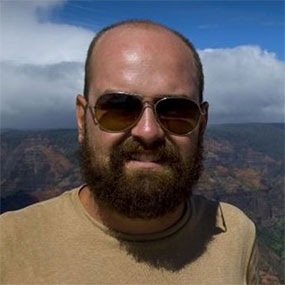
NOAA Office of National Marine Sanctuaries Maritime Heritage Program – Mission Principal Investigator and Chief Archaeologist
Joe Hoyt is a maritime archaeologist with NOAA's Office of National Marine Sanctuaries. He specializes in archaeological recording of deepwater shipwrecks and has worked on several NOAA projects in the Thunder Bay, Florida Keys, and Monitor National Marine Sanctuaries since 2001. In 2004, he was awarded the North American Rolex Scholarship through the Our World Underwater Scholarship Society. He has worked on underwater archaeology projects in North and South America, Europe, the Great Lakes, Atlantic and Pacific Oceans, and several inland rivers. Joe is also an avid underwater photographer and technical diver and has crewed documentary expeditions on BBC's Planet Earth and PBS. For the last 10 years, Hoyt has been the Chief Scientist on a multifaceted wide-area investigation of World War II-era shipwrecks lost off the coast of North Carolina. In 2014, Hoyt led a team of researchers that discovered the final resting place of a World War II Battlefield off the coast of North Carolina, consisting a German U-boat, U-576, and its victim, a Nicaraguan flagged freighter, Bluefields. Hoyt earned an MA in Maritime History and Nautical Archaeology from East Carolina University and serves on the Advisory Council for Underwater Archaeology.
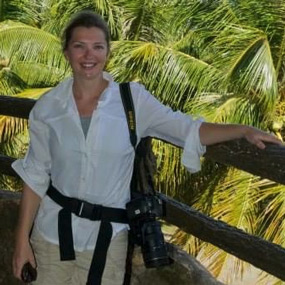
Freelance Contractor
Maryann Kovacs has spent over 15 years working as a freelance contractor for an underwater imaging laboratory, as part of the Woods Hole Oceanographic Institution Advanced Imaging and Visualization Laboratory. The majority of her career was spent working alongside scientists and engineers to acquire imagery in some of the planet’s most challenging natural environments, such as the deepest and most unexplored areas of our underwater world. Communicating these discoveries to the public has led to opportunities in working with many well known documentary groups such as the BBC, History Channel, National Geographic, IMAX, NOVA, Discovery, A&E, and Curiosity Channel.
She has assumed numerous and shifting roles depending on the needs of the project, from at-sea project coordinator and photogrammetry specialist to producer and editor. Because of her strong communication skills, she has often served roles that help bridge any communication gaps between scientists, engineers, and other team members to aid in demonstrating and communicating science to the public through short videos and presentations.
Straddling the line between logic and imagination – or science and creativity - is something she understands well. This is partly due to years spent in the science and engineering world in combination with her natural artistic expressiveness. She loves merging together these different ways of thinking to create impactful immersive visual and auditory experiences that resonate with audience members.
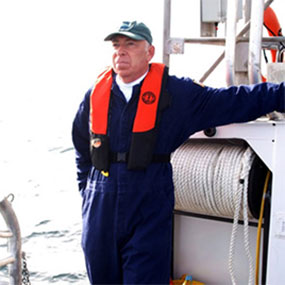
Mike Overfield headed back to sea for a research expedition aboard the U.S. Navy Nuclear Research Submarine NR-1. Image courtesy of David Alberg, NOAA, 2006.
(1955-2009)
NOAA Office of National Marine Sanctuaries Maritime Heritage Program – Maritime Archaeologist
While Mike is no longer with us, his legacy lives on in the “Hunt for the Bear.” During his time with NOAA’s Maritime Heritage Program, Mike was the creative force behind many fascinating projects, and this one was no exception. His curiosity was as boundless as his energy and enthusiasm, and Bear was on the top of his list of projects we needed to pursue. His original research on Bear is being used to inform and guide planning, and his skills and expertise as a talented maritime archaeologist provide us with the foundation for the seabed mapping survey design we are using on this mission. While Mike may not be physically present onboard Sycamore, his spirit is a light that still shines brightly on that patch of ocean we are mapping, illuminating the darkness we are exploring. We are grateful and humbled to have the opportunity to, once again, honor Mike’s legacy with this mission to find the last resting place of yet another bright light in the rich and compelling maritime history of the United States.
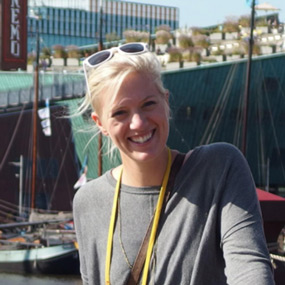
Maritime Archaeologist, NOAA Office of National Marine Sanctuaries Maritime Heritage Program
Madeline Roth is a maritime archaeologist with the NOAA Office of National Marine Sanctuaries Maritime Heritage Program. She received her bachelor’s degree in anthropology from St. Mary’s College of Maryland and holds an M.A. in Maritime Studies from East Carolina University. Over the past decade, Madeline has been involved in archaeological projects throughout the United States, Caribbean, Africa, and Pacific. Prior work with the National Park Service instilled an interest in resource management that she has continued to pursue at NOAA; additional research interests include World War II heritage, naval battle spaces, and conflict archaeology.
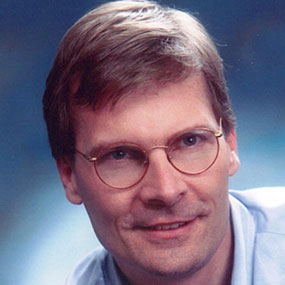
Atlantic Area Historian, U.S. Coast Guard
Dr. Thiesen serves as Atlantic Area Historian for the U.S. Coast Guard. Prior to working for the Coast Guard, he taught history at the undergraduate and graduate levels and served as curator and assistant director for five years at the Wisconsin Maritime Museum, the largest maritime museum on the Great Lakes. Dr. Thiesen earned a master’s degree from East Carolina University’s Program in Maritime History, with a concentration in naval history, and a Ph.D. in University of Delaware’s Hagley Program in the History of Industrialization and Technology, with a specialization in maritime industries and technology. His articles and reviews have appeared in numerous naval and maritime journals, including Proceedings of the United States Naval Institute, Naval History Magazine, Naval War College Review, International Journal of Maritime History, The Mariner’s Mirror, Sea History Magazine, Nautical Research Journal, The American Neptune, and the Journal of Maritime Research. His books include Industrializing American Shipbuilding: The Transformation of Ship Design and Construction, 1820-1920 and Cruise of the Dashing Wave: Rounding Cape Horn in 1860. Thiesen’s Coast Guard-history series, “The Long Blue Line,” is featured weekly on the Coast Guard Compass website.
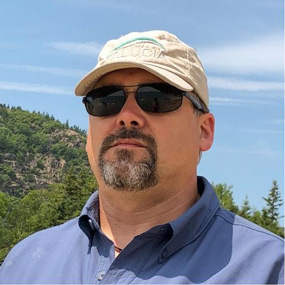
Remotely Operated Vehicle Pilot, Marine Imaging Technologies
After a decade of field projects for Marine Imaging Technologies, David Ullman joined Marine Imaging full time in 2017 as the Operations Director, a remotely operated vehicle (ROV) pilot, and photographer/videographer. His attention to detail and obsession with maintaining organization has cemented his role on Marine Imaging’s ROV team.
Prior to joining Marine Imaging, David’s career focused on producing live events and event design, first with his own production company then as the Director of Event Technology at the Waldorf Astoria Hotel in New York City. While at the Waldorf Astoria, David worked with Fortune 500 companies; celebrities; and the upper levels of governments, both domestic and foreign. It was his daughter’s graduation that freed David to leave the corporate world and pursue his passion for ocean exploration and conservation.
Like so many others, David’s curiosity and interest in ocean exploration began with SCUBA. It was the limitations of SCUBA that directed David to ROVs and specifically ROV piloting. It was on a wreck in Lake Michigan, the Northerner, that David first piloted Pixel, Marine Imaging’s cinema class ROV. The clarity and definition of her images partnered with the smoothness of her flight motion defined her as his preferred vehicle for capturing and sharing ocean exploration.
David balances his professional life of underwater exploration and camera systems with a commitment to volunteerism and frequent roamings by car, bicycle, and foot. He is a disaster responder for the Red Cross and an avid platelet donor.